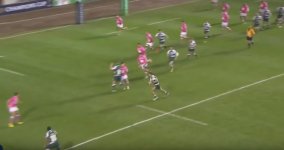- Joined
- Jul 12, 2005
- Messages
- 13,680
- Post Likes
- 1,760
- Current Referee grade:
- Level 2
I'll come back on Ian's reply to me, but this I agree with. The definition you usually use for intentional includes "reckless"; indeed a version of "reckless" that borders on "negligent".
Neither "reckless" nor "negligent" appear in the Laws of the Game, so that is really of no consequence. I think you are just playing with words Roblev.
By that definition, accelerating to be alongside the BC - which the "support" did - when the tackler tries to get to him looks intentional.
And to chrismtl; I don't think anyone can look at that clip and believe that the "support" wasn't "trying to achieve" a block on the incoming tackle.
Well, I am not seeing what you are seeing. I have gone back and looked at all the angles shown in that video. I have done so several times, and no matter how hard I try to find a PK in there, I just can't. All I see is a player running a support line for his ball carrier.





